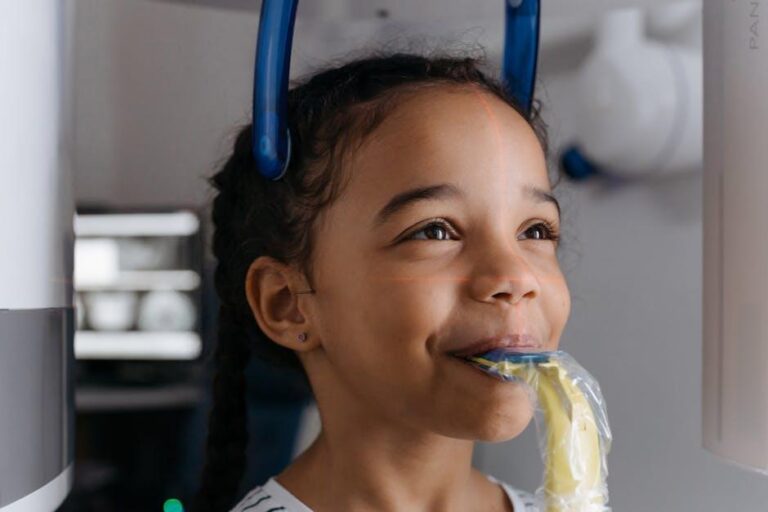1 in 3 Kids Has Dental Problems, Poll Finds – U.S. News & World Report
Dental health in children is more critical than ever, yet a recent poll reported by U.S. News & World Report reveals a concerning statistic: 1 in 3 children in the United States currently suffers from dental problems. This alarming figure highlights a growing public health challenge surrounding pediatric oral health and underscores the need for better prevention and awareness.
Understanding the Poll and Its Findings
The poll surveyed thousands of parents and guardians across the country to evaluate the prevalence of common dental issues in children under the age of 12. It found that dental problems — especially cavities and tooth decay — affect roughly 33% of kids, making them one of the most common childhood health problems in the U.S.
| Dental Problem | Prevalence Among Kids | Age Group Most Affected |
|---|---|---|
| Cavities (Tooth Decay) | 28% | 6-11 years |
| Gum Inflammation (Gingivitis) | 8% | 9-12 years |
| Tooth Sensitivity | 12% | 5-10 years |
The findings point to a worrisome trend needing urgent attention from parents, dental health professionals, and policymakers alike.
Common Causes of Dental Problems in Children
Children face a unique set of challenges that contribute to dental health issues. Understanding these factors can empower caregivers to take better preventive measures:
- Poor Oral Hygiene: Irregular brushing and flossing lead to plaque buildup and cavities.
- Excessive Sugar Intake: Frequent consumption of sugary snacks and drinks fuels bacteria that cause tooth decay.
- Lack of Regular Dental Checkups: Many children do not visit a dentist regularly due to financial, cultural, or logistical barriers.
- Limited Fluoride Exposure: Fluoride strengthens tooth enamel and prevents decay; lack of it increases vulnerability.
- Socioeconomic Factors: Children from low-income families are disproportionately affected by dental diseases.
Consequences of Untreated Dental Problems in Kids
Ignoring dental issues can have far-reaching impacts beyond physical discomfort:
- Chronic Pain and Discomfort: Toothaches reduce quality of life and may interfere with sleep and daily activities.
- Speech and Eating Difficulties: Missing or damaged teeth impact speech development and nutritional intake.
- Lowered Self-Esteem: Visible dental decay can affect children’s social interactions and confidence.
- Higher Risk of Future Oral Health Problems: Dental issues in childhood often predict adult dental disease.
Effective Prevention Strategies and Benefits
Fortunately, many dental problems in children are preventable with consistent care and lifestyle adjustments. Here’s what parents can do:
Practical Tips for Parents and Caregivers
- Establish a Regular Brushing Routine: Brush children’s teeth twice daily with fluoride toothpaste.
- Encourage Healthy Eating Habits: Limit sugary snacks and drinks; promote fruits, vegetables, and calcium-rich foods.
- Schedule Biannual Dental Visits: Early and routine checkups aid in early detection and treatment.
- Use Fluoride Treatments: Ask the dentist about topical fluoride applications or supplements.
- Lead by Example: Parents who model good dental habits positively influence their kids.
Implementing these steps leads to a range of benefits:
| Prevention Benefit | Impact on Child’s Health |
|---|---|
| Reduced Cavity Risk | Healthier teeth, fewer painful treatments |
| Improved Overall Health | Lower inflammation, better nutrition |
| Better Self-Confidence | Smiling proudly, positive social interactions |
| Long-Term Oral Health | Less risk of adult dental diseases |
Case Study: A Success Story in Pediatric Dental Care
Consider the story of Emma, a 7-year-old whose persistent toothaches prompted her mother to seek dental care earlier than planned. Within months of initiating a complete dental hygiene routine with professional guidance, Emma’s cavities stabilized, and she adopted healthier eating habits. Regular checkups became a family priority — significantly lowering Emma’s dental problems and setting a foundation for lifelong oral health.
First-Hand Experiences: What Parents Are Saying
Many parents share similar struggles and successes:
“I didn’t realize how important dental visits were until my son got his first cavity. Now, we brush together and he even reminds me to floss!” – Jessica M.
“Cutting out soda and candy drastically improved my daughter’s dental health. Her last dental visit was cavity-free, and she couldn’t be prouder!” – Marcus L.
Conclusion: Prioritizing Children’s Dental Health for a Healthy Future
The recent poll highlighting that 1 in 3 kids has dental problems serves as a crucial wake-up call. Addressing the root causes through education, routine care, and access to dental services can drastically reduce this number and improve children’s overall health and happiness.
Parents, educators, and healthcare providers must work together to foster habits promoting strong, healthy teeth — ensuring that childhood smiles stay bright for years to come.


